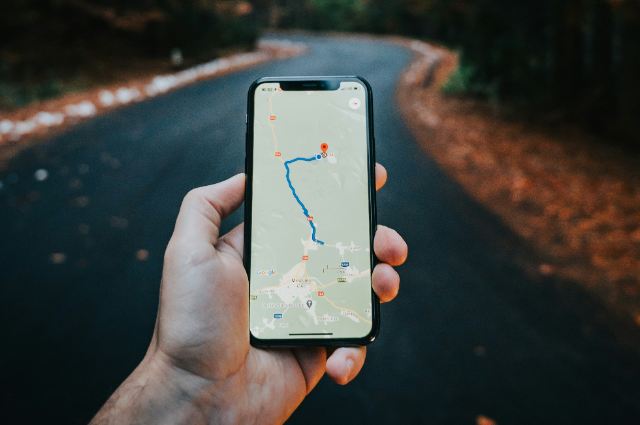
Photo by Tamas Tuzes-Katai on Unsplash
With billions of users worldwide, Google Maps is one of the most popular mapping and navigation apps. For a variety of transportation options, such as walking, driving, bicycling, and public transportation, it offers real-time navigation, traffic updates, satellite imaging, street views, and route planning. Have you ever wondered how Google Maps collects data and how it’s efficient functioning has made our lives so much easier.
This article has been written with best effort and made as simple as possible to understand the various tools, strategies and elements that make Google Maps one of the most trusted and used application in all our mobile phones.
The main elements that help in the functioning of Google Maps are as follows:
1. Geo-spatial Data Collection :
The data that aids in the functioning of Google Maps comes from various sources like :
- Satellite Imagery: Google Maps takes help from satellite data suppliers to obtain high resolution pictures of the surface of the Earth.
- Street View Data: Using the assistance of Google's camera-equipped Street View vehicles, users can virtually tour places by taking panoramic pictures of the streets
- Public and Private Data Providers: Businesses, government organizations, and local governments exchange information about landmarks, public transportation routes, and road layouts.
- User-Contributed Data: Users have the access to share location pictures, reviews and any significant information or data to enhance the functioning of this platform.
2. Mapping and Cartography:
Once the data is in store, now comes the role where this data is later processed into coherent , navigable format.
- Digitization of Maps: To create the digital organized data from the physical maps and satellite images, Geographic Information Systems (GIS) is used.
- Layering Information: Layering implies to inclusion of terrain, roads, urban infrastructure, water bodies etc to enhance the detailing of the maps.
- Frequent Updates: There’s constant updates regarding construction, new roads, updated locations etc.
3. Route Calculation Algorithms:
There are 2 kinds of algorithms used for the efficient working of the Google Maps.
- Dijkstra’s Algorithm: Simply speaking, this algorithm helps you reach your destination as soon as possible I.e. helping you find the shortest routes.
- A* (A-Star) Algorithm: This is a modified version of the Dijkstra’s algorithm which prioritizes paths and estimated travel time. Helps you navigate smoothly through traffic and reach your destination at the earliest.
4. Real-time Traffic Updates:
Live traffic updates and estimated time of travel is provided using :
- GPS Data from Mobile Devices: Random, anonymous location data collected through smartphone helps to investigate traffic patterns.
- Historical Traffic Data: Past records of traffic in specific areas at specific time helps in prediction of traffic patterns.
- Government and Third-Party Reports: The system incorporates construction updates, road closures, and accident information.
5. User Interaction and Feedback:
Feedback, data and images uploaded by user on this platform helps to make necessary changes regarding location or functioning of Google Maps. Hence, users play crucial role in smooth and efficient functioning of this application.
6. Artificial Intelligence and Machine Learning:
AI and machine learning are used by Google Maps to continuously enhance its offerings. Among the primary AI-powered features are:
- Predictive trip Time: AI makes precise trip time predictions by examining past traffic patterns.
- Automatic Road Detection: Using satellite data, machine learning models detect alterations and new roads.
- Personalized Suggestions: Google Maps makes recommendations for activities, eateries, and sites of interest based on user behavior.
- Voice Recognition for Navigation: AI makes voice instructions possible, allowing navigation without using the hands.
Google Maps has many more functions than just navigation. Among the most well-liked ones are:
- Turn-by-Turn Navigation: Google Maps offers detailed, real-time navigation for a variety of transportation options, such as:
a. Driving: Displays the quickest routes, detours, and anticipated times of arrival.
b. Walking: Provides landmarks and pedestrian-friendly paths.
c. Cycling: Provides information on bike lanes and terrain.
d. Public Transportation: Shows transfer locations, station information, and transit times. - Street View: Through 360-degree panoramic photos taken by Google's Street View vehicles, users may visually explore destinations with Street View.
- Offline Maps: Maps are available for offline download, enabling users to navigate without an internet connection.
- Augmented Reality (AR) Navigation: AR technology can be used to visualize directions on real world roads and streets using the smartphone camera.
- Google Maps API: A handy tool for the developers to integrate Google Maps into their applications directly for business purposes.
- Location Sharing: A common feature allowing users to share locations with their friends and family.
- Business Listings and Google My Business: Businesses can register on this platform giving customers the store timings, contact details, location, reviews etc.
With its advantages, Google Maps also has certain concerning disadvantages.
- Data privacy: Constant open location sharing and data tracking can be concerning.
- Internet dependency: In poor network areas, it might get difficult to use Google Maps. Hence, making its access limited.
- Mis-navigation: There are real world cases which has lead to fatal accidents due to wrong directions. Hence, just like humans Google Maps can’t be trusted or be relied on easily.
With all the concerns keeping in mind, Google Maps is still working and improvising. Indoor navigation in airports, malls etc is a new impressive advancement in Google Maps. Also, Supporting self-driving automobiles with more exact real-time data.
Google Maps is a vital tool that has transformed location-based services and navigation. The way individuals navigate and explore the environment is continuously improved by use of sophisticated algorithms, real-time data processing, and user-driven enhancements. Google Maps is anticipated to incorporate even more clever and creative features as technology develops, making it an even more potent tool for consumers everywhere.
